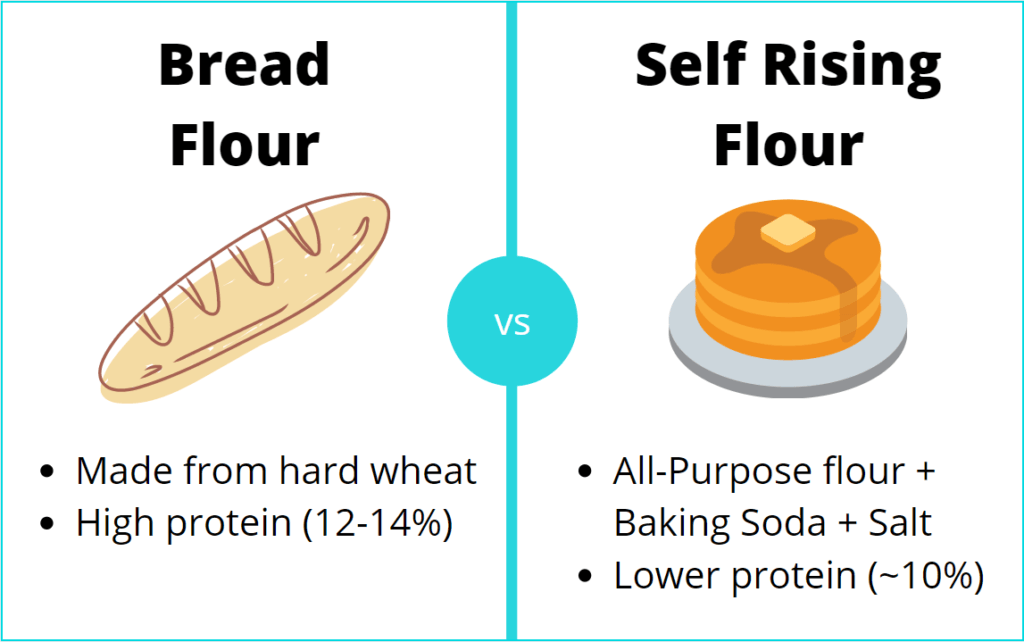Self rising flour is not the same as bread flour. They are very different types of flours that are used to bake different types of breads and other foods.
In short, self rising flour is a mixture of all-purpose flour, baking soda, and salt, and is used for cakes and non-yeast breads.
On the other hand, bread flour is just flour that has a high protein content, making it ideal for sourdough and similar types of breads.
You cannot substitute one for the other and expect great results.
I’ll walk you through the biggest differences between self rising and bread flour in more detail.
Table of Contents
How Self Rising Flour and Bread Flour Are Made
When you think of self-rising flour, think of all-purpose flour, because that’s what it’s made from. You can make your own by adding baking soda and salt.
This makes self rising flour great for pancakes and many baked goods where protein content isn’t that important, but terrible for making bread.
On the other hand, bread flour is made from hard wheat. These strains of wheat have a high protein content, and are great for baking things where the rise comes from yeast.
The high amount of gluten in bread flour helps contain the carbon dioxide that yeast gives off during fermentation, which produces a rise without collapse or unevenness.
Self rising flour contains baking soda and salt, making it appropriate for certain baked goods like pancakes, but not actual bread. Bread flour only contains wheat flour.
Protein Content of Self Rising vs Bread Flour
If you refer to my page of the protein content of different wheat flours, you’ll see that:
- All-purpose flour has a protein content of about 10%
- Bread flour has a protein content of 12-14%
While 2-4% of protein doesn’t sound like a lot, it’s still a 20-40% difference.
I’ve recently gotten into making sourdough bread, and you quickly learn that the higher the gluten content in the flour you use (which directly corresponds to protein content in most cases), the easier it is to bake a well-shaped loaf.
Since self rising flour is typically made from all purpose flour, it has a lower protein content than bread flour. Bread flour is made with specific types of high protein wheat and has extra gluten (protein) added.
Can I Substitute Bread Flour For Self Rising Flour?
You can substitute bread flour for self rising flour if you need to. It won’t give the same texture that you’re trying to achieve, but it’ll be decent enough in a pinch. You will have to add baking soda and salt to the flour in order to make your dough rise when cooked.
Note that bread flour develops strength quickly, so don’t overmix.
The opposite does not apply.
Substituting self rising flour for bread flour is usually not a good idea. While sourdough bread and similar can be made with all purpose flour and needs salt, the baking soda is rarely called for and can cause poor results with most recipes.
It does depend on what you’re making, but in general you can substitute other types of flour for self rising flour in recipes, but not the other way around.

